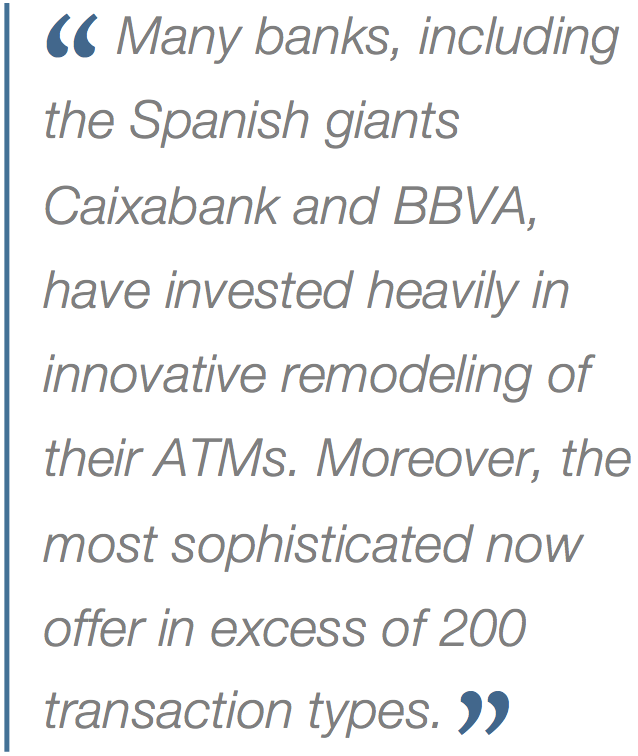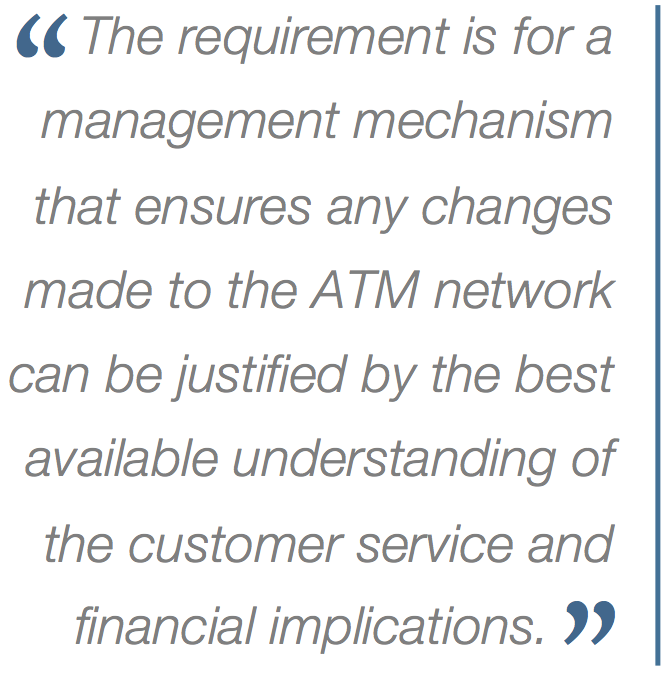


Issues such as falling cash demand and branch closures could present a challenge to ATM deployers. They'll need to use their heads to sort out the real-world problems from the exaggerated predictions and come up with a sound approach to fleet management.
 image istock
image istock
by David Cavell ATMIA and Retail Banking Consultant
The ATM has celebrated its 50th birthday in good shape. It is still very much the workhorse of the industry and the trend in the overall number of ATMs is expected to maintain its upwards trajectory, reaching 4 million globally by 2021, according to RBR.
 Industry leaders continue to make great strides in the ongoing development of the user experience, service and sales features of the ATM. Many banks, including the Spanish giants Caixabank and BBVA, have invested heavily in innovative remodeling of their ATMs. Moreover, the most sophisticated now offer in excess of 200 transaction types.
Industry leaders continue to make great strides in the ongoing development of the user experience, service and sales features of the ATM. Many banks, including the Spanish giants Caixabank and BBVA, have invested heavily in innovative remodeling of their ATMs. Moreover, the most sophisticated now offer in excess of 200 transaction types.
Across the world, the ATM continues to operate successfully in many different business situations. For example, advanced-function machines are now serving as branch substitutes across remoter parts of India. In this way they extend access to financial services for both the banked and unbanked.
The neighborhood bank concept launched in Washington by Wells Fargo in 2013 was an early example of how the ATM is increasingly operating in tandem with mobile devices to support branch transformation.
In Brazil, Bradesco has led the world with the large-scale roll out of biometric recognition across its network of over 36,000 ATMs. More than 25,000 of these machines handle contactless transactions.
Meanwhile, the growth of the IAD sector continues unabated. Along the way, significant resources are being dedicated to improving access for the disabled.
Disruptive issues
Notwithstanding this optimistic backdrop, there are disruptive issues emerging that will provide an increasing challenge for ATM managers.
Some of these will take many years to make a significant impact, but they could all be an early source of unhelpful and distracting hyperbole of the type that has for more than 20 years predicted the death of the bank branch.
But despite forecasts to the contrary, the number of branches operating across the world has actually continued to grow, and totalled more than 1 million by 2016, according to RBR.
One of the most important developing issues affecting the prospects of the ATM is a fall in the demand for cash. However, this is still only apparent as a trend in a limited number of markets.
Another issue in some markets, is the closure of large numbers of branches at which ATMs have been deployed. This continues as a result of post economic crisis industry consolidation and some digital disintermediation.
A knock-on effect will see some recycling of machines whose host branches have closed, in turn suppressing the demand for new ATMs. This could reduce significantly the number of operational machines in years to come but the issue has yet to develop significant scale.
A sound professional approach
The complexity and continuing growth of the global ATM sector will demand an increasingly professional, objective approach to monitoring the performance and value derived from machines.
 The requirement is for a management mechanism that ensures any changes made to the ATM network, whether positive or negative, can be justified by the best available understanding of the customer service and financial implications.
The requirement is for a management mechanism that ensures any changes made to the ATM network, whether positive or negative, can be justified by the best available understanding of the customer service and financial implications.
There also must be a fast response with effective remedial action to deal with any existing or projected shortcomings in performance.
With proper management of this valuable asset, the ATM Industry Association foresees a continuing preeminent role for the ATM. However, the increasingly disrupted business environment will bring with it much talk of disintermediation.
One valuable lesson for ATM managers is to ignore hyperbole and conjecture of the type used in postulating the demise of the branch. This has usually lacked any sound professional and practical comment on how executives should respond to and manage the closures that have been conjectured. Moreover, it has been seemingly myopic to the beneficial effects that come from a strategy based on well-documented industry best practice.
As always, the answer lies in a thorough understanding of the current performance of individual ATMs, rigorous evaluation of any proposals for change, and decision-making based on known facts rather than hyperbole.
In this way, the ATM service will continue to develop and add value (rather than destroy it) for many years to come.
Sign up now for the ATM Marketplace newsletter and get the top stories delivered straight to your inbox.
Privacy PolicySeptember 9-11, 2024 | Charlotte, NC